#longicorn beetles
Explore tagged Tumblr posts
Link
To help make wood more palatable, some wood-feeding insects are assisted by symbiotic microorganisms that break down the components of wood into an edible form.
A group from Nagoya University in Japan has isolated a symbiotic yeast from adults, larvae and eggs of the Japanese longicorn beetle and identified specialized organs that store the yeast, allowing the beetles to break down the unpalatable components of wood. Their findings were published in PLOS ONE.
"I have been fascinated with longicorn beetles since childhood because there are more than 900 species in Japan and they just look cool," said Dr. Wataru Toki, a lecturer at Nagoya University. "When I visited forests as a boy, I wanted to see new longicorn beetles that I had never seen before. As a researcher, I am interested in how they eat wood, because after all humans cannot eat wood. I found several studies that suggested microorganisms could be the key."
Wood is an important part of the life cycle of the longicorn beetle. After visiting flowers to collect pollen, the female Japanese flower longicorn beetle lays eggs on dead and rotting wood. Within a month, the larvae hatch and burrow into the wood. They feed and pupate before hatching into adults. Understanding how the larvae survive by eating wood is important because they help decompose dead wood, contributing to the cycling of nutrients in the forest.
Continue Reading
66 notes
·
View notes
Text

Simplified bug #9 Rosalina Longicorn/Alpine Longhorn Beetle (Rosalia Alpina)
request by @potato-dumpling-soup
#bros name is so long holy moly#rosalia longicorn#alpine longhorn beetle#beetle#coleoptera#insects#entomology#art#bugs#doodle#simplified bugs#drawing
54 notes
·
View notes
Text

Tragocephala cuneifera
#Tragocephala cuneifera#beetles#insects#nature#animals#insecta#arthropods#arthropoda#coleoptera#polyphaga#Cerambycidae#longhorn beetle#longicorns#wikipedia#wikipedia pictures#wikimedia commons#entomology#beetle#beetleposting
39 notes
·
View notes
Text
poinciana longicorn!!!!!!


absolutely gorgeous huge guy who gave me a mighty and respectable bite! (below the cut due to. blood [not much]). the bite was entirely provoked and my fault due to me picking it up to relocate it with full knowledge they can give a powerful bite
what a guy!!!!!!!!
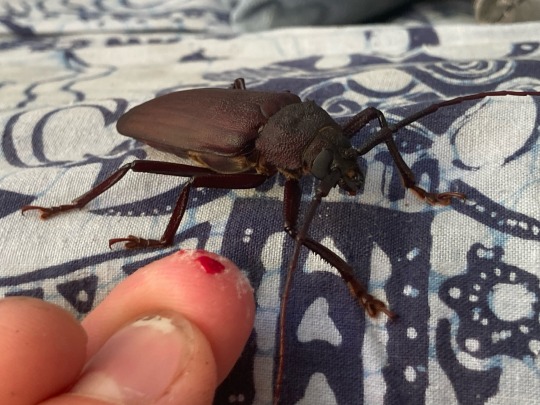
#beetle#longicorn beetle#coleoptera#cerambycidae#agrianome#agrianome spinicollis#poinciana longicorn#i absolutely love these guys#very beautiful. very powerful!!!!
80 notes
·
View notes
Text
#2427 - Hybolasius crista


One of 9,776 species of insects first described by Johan Christian Fabricius, back in 1775. Another New Zealand endemic longicorn.
There are 19 species of Hybolasius in New Zealand, and others elsewhere. H. crista breeds in the stems of large-leaved Coprosma species, apparently, but little is known about their biology.
Mangorei, Taranaki, New Zealand.
11 notes
·
View notes
Text

Rosalia longicorn (Rosalia alpina)
Photo by Andres Miguel Dominguez
#Rosalia alpina#rosalia longicorn#longhorn beetle#beetle#coleoptera#blue#blue beetle#colorful beetles#insects#entomology#longicorn#cerambycidae#insect photography#macro photography#animals#nature
14 notes
·
View notes
Text

Spotted Longhorn, Ruptela maculata Canon 400D EF 100 2.8 f/13 1/100 iso: 400 Srbsko Czech Republic 7/5/2009 #
#Longhorns#Cerambycidae#Coleoptera#beetles#Longicorns#IInsects#invertebrates#macro#insects#macrophotography#insectphotography#insect#canon
36 notes
·
View notes
Text



had a great photosession with Rosalia alpina that visited our home today ✨
8 notes
·
View notes
Text
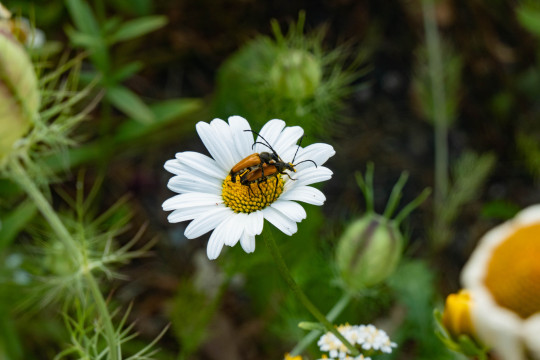



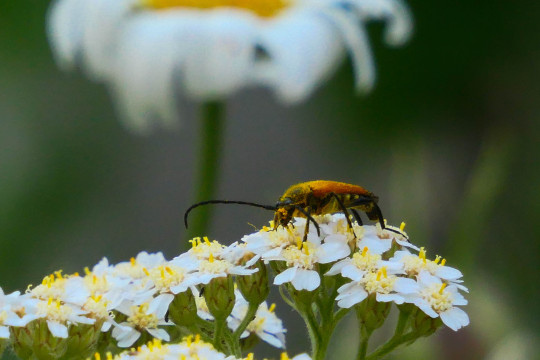
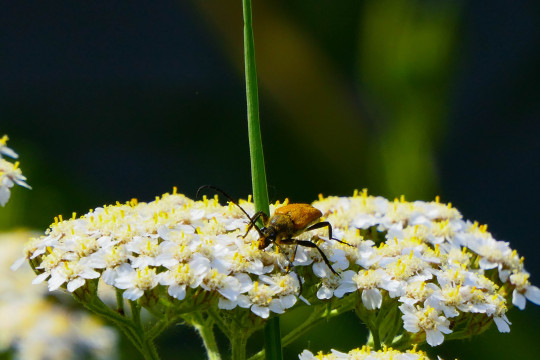



Lepture Fauve - Les larves se nourrissent des bois morts ou vivants des feuillus et des conifères.
Lieu : Chez moi, Hauts-de-France
#jardin#garden#photo#photo animalière#animals photography#animaux sauvages#wild animals#insecte#bug#longicorne#lepture fauve#coléoptère#bettle#long horn beetle#long horned#longicorn
2 notes
·
View notes
Text
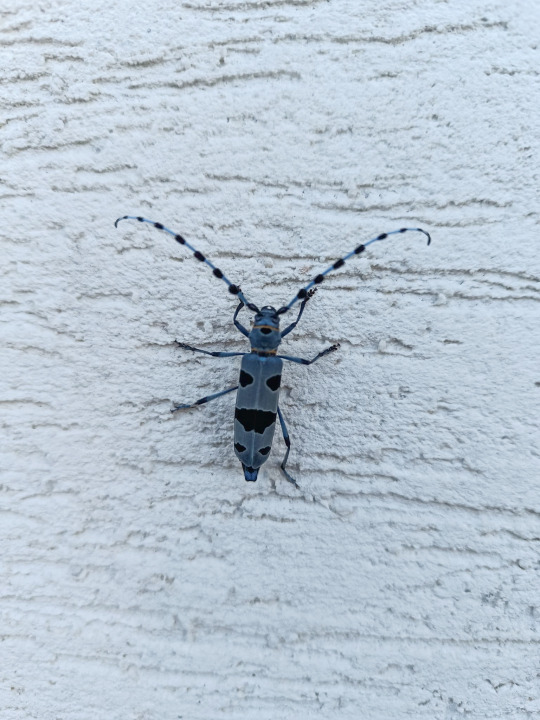
0 notes
Text
An excellent-looking bug.

Rosalia longicorn
Photographer: Daniela Graf
GDT Nature Photographer of the Year 2023
86 notes
·
View notes
Text

Had so much fun with this one! A collection of beautiful bugs drawn with pen & copics.
Not size-accurate to one another. List of included arthropods and cleaned up image under the readmore.
eyed click beetle, one-eyed madagascar click beetle, 22-spot ladybird, 15-spotted ladybeetle, 7-spot ladybird, blue carpenter bee, inca clathratus sommeri, euchroea coelestis, anise swallowtail caterpillar, painted tiger moth, green sweat bee, spiny-backed orb weaver, stephanorrhina guttata, twice-stabbed lady beetle, rosalia longicorn, starry-sky beetle, zebra jumping spider, clipper butterfly, spilopyra sumptuosa, freshly molted cicada, regal moth, jeweled flower mantis, picasso bug, cream-streaked ladybird, thorn bug, rainbow stag beetle, eye-spotted lady beetle, saddleback caterpillar, tortoise beetle, eupholus schoenherri petitii, woolly-bear caterpillar, halloween pennant dragonfly

49 notes
·
View notes
Text




Colorful stipple beetle :)
Black Longicorn Beetle (Spondylis buprestoides)
#photographers on tumblr#my photography#original photographers#art#lensblr#photography#animal photography#insect photography#wildlife photography#macro photography#nature photography#flash photography#night photoshoot#nature#wildlife#naturecore#insect#beetle#beetles#longhorn beetle#bug#bugs#bugblr#entomology#stipple#july 10 2024#noai#no to generative ai
20 notes
·
View notes
Text




A longicorn beetle and a fiddler beetle I saw recently!! :D
7 notes
·
View notes
Text



another green fellow on the casuarina
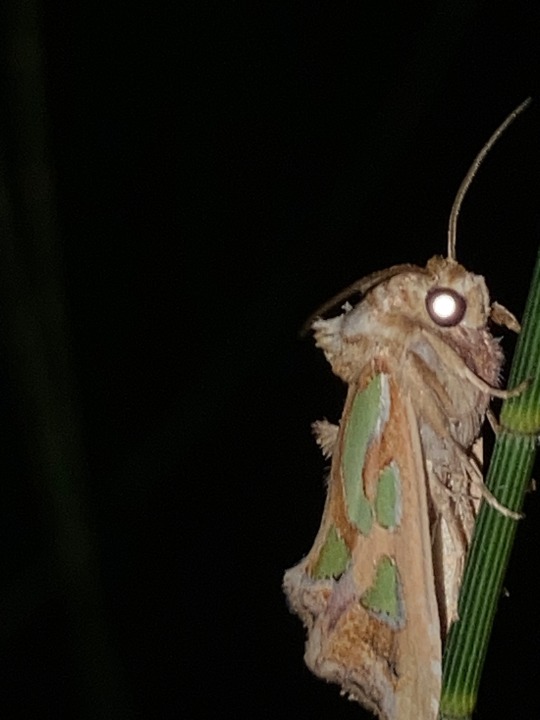

love moth common names. this is the green-blotched moth (cosmodes elegans). because she. the wings are blotched. with green
#beetle#longicorn beetle#coleoptera#cerambycidae#rhytiphora#<- probably but it's according to inat cv who i trust for inverts as far as i can. look inside the black box
651 notes
·
View notes
Text
#2426 - Prionoplus reticularis - Huhu

Windows in New Zealand usually don't have flyscreens on them, because they don't have remotely the fly problem Australia does. One bonus is getting New Zealand's heaviest beetle flying into the room.
The beetle and its larvae have various names in te reo Māori, - the larval form is known as huhu, tunga haere, or tunga rākau, the final larval stage after it empties its gut and prepares to pupate as tataka, the pupa as pepe, and the adult pepe-te-muimui or tunga rere.
The adults only live a few weeks, so I was lucky I was in the country over that window. The larvae spend two or three years eating dead gymnosperm timber.
The larvae are highly prized as a traditional food, and very nutritious.
The adult beetles are nocturnal and are attracted to light. George Vernon Hudson wrote in 1892 "this propensity frequently leads it on summer evenings to invade ladies' drawing-rooms, when its sudden and noisy arrival is apt to cause much needless consternation amongst the inmates". Maybe not that needless though - they have powerful mandibles like other Prionine longicorns, and don't hesitate to bite. As I discovered to my cost. The little bastard.
Mangorei, Taranaki, New Zealand
9 notes
·
View notes